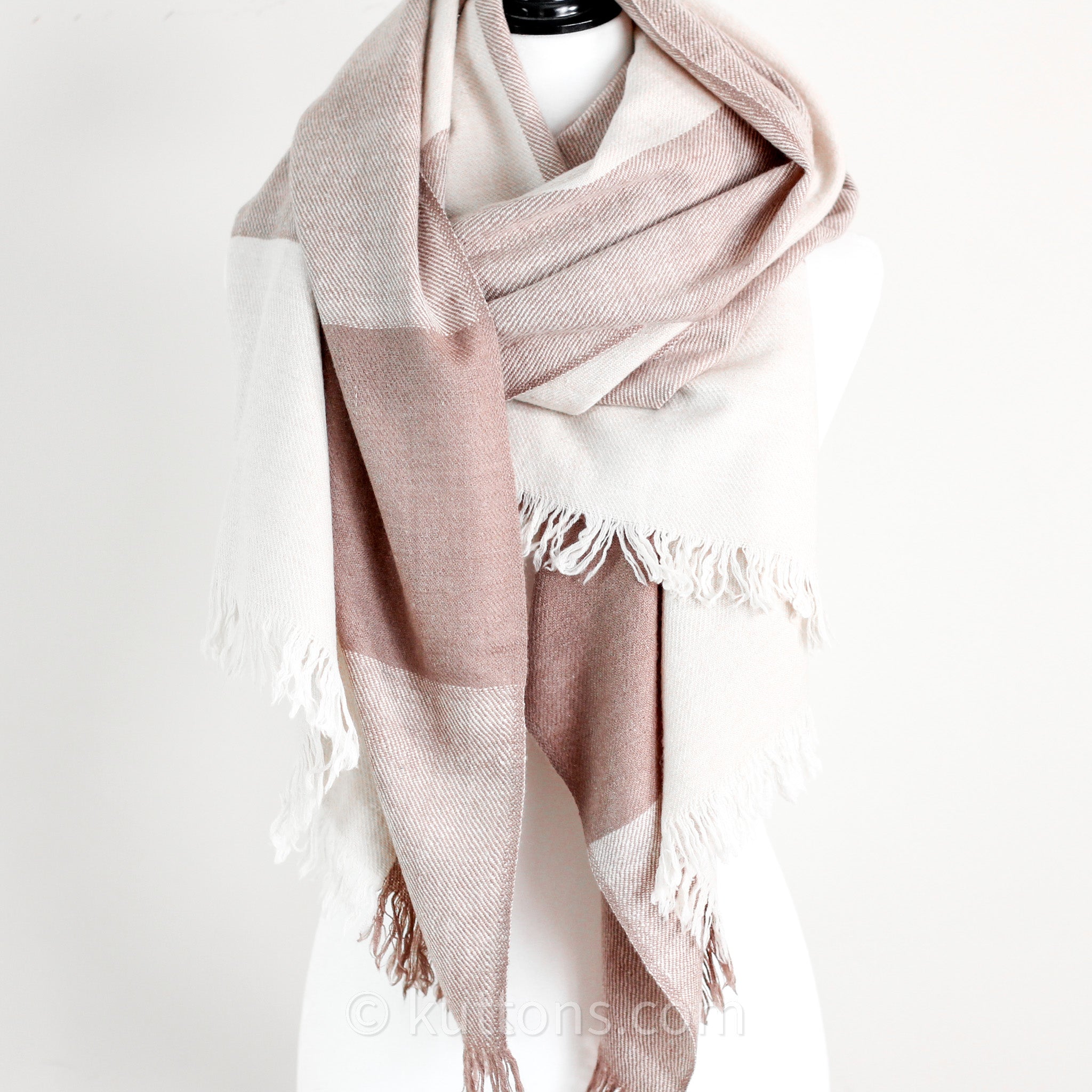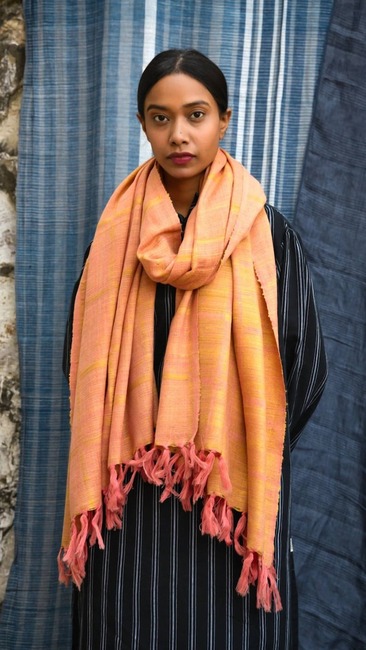White Pure Wool Scarf hot - White Pink Woolen Shawl - Handwoven Scarf - Winter Wrap - Tribal Scarf - Scarf For Women
A beautiful white 100% wool scarf with pink mirror work.
Dimensions: 84 inches * 35 inches
Colours: White with pink embroidery and pom poms
Below is the traditional process involved in the making of a Rabari shawl:
1.Wool is spun by either the weaver's family – most often the women, or the Rabari communities for who the shawl is ultimately made.
2.The weaver weaves the cloth. The traditional pit looms were usually only wide enough for one half of the shawl so two pieces were woven then sewn together using the distinctive and decorative ‘fish stitch'.
3.The woven cloth was then sent to the Khatris – the dyers to dye the cloth. If it was to be tie dyed, the cloth was first given to the rabari woman – the customer – to choose her preferred design. She would then give this back to the weaver who would give to the Khatri to carry out the dyeing.
4.Once dyeing is complete it was given back to the Rabari woman who would embellish the shawl with dense and elaborate bright coloured embroidery.
Until recently, shearing was done by the shepherds themselves. Now sheep shearers come from near the Rajasthan border twice a year hot to travel from village to village to shear the sheep, Shamji tells me. The local desi wool is very coarse and while it was popular for the Rabari and Ahir men as blankets (dhablo) while out in the cold harsh desert, and for the Rabari women because of their belief in its ritual purity, it doesn't have this significance for the urban and foreign clientele who now make up the majority of the weavers' market.
Most Vankars now use imported wool such as Merino from New Zealand, as well as cotton and silk for scarves, stoles and shawls. Shamji does include local wool shawls in his shop, some un-dyed (the natural colour of the sheep), some dyed in natural indigo, others in chemical colours, which he says are popular with foreign markets as throws.
Unless the shawl has to be piece-dyed or tie-dyed, as mentioned above, the weavers usually dye the yarns themselves before weaving, or procure ready-dyed yarns. Shamji often does the dyeing himself so he can get the exact colour he needs. Lac dye was traditionally used for women's shawls, a dye which Shamji and others have revived over the past few decades after its decline in the middle of last century.




